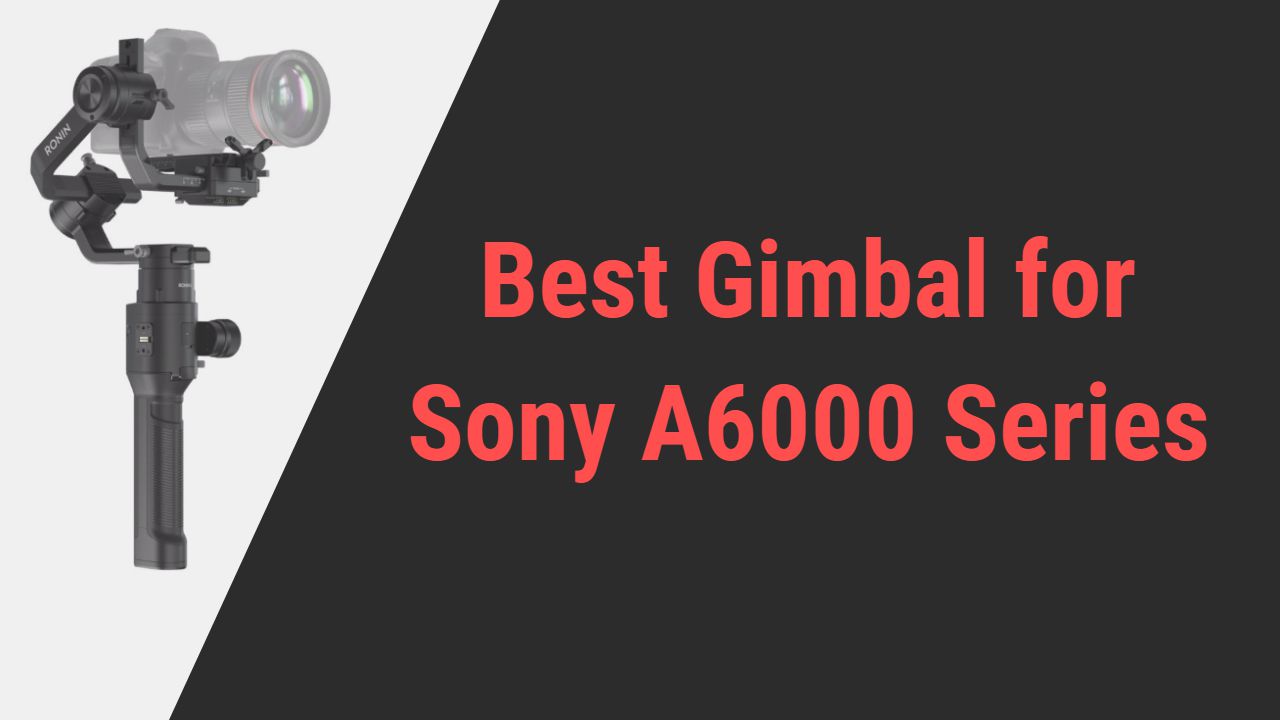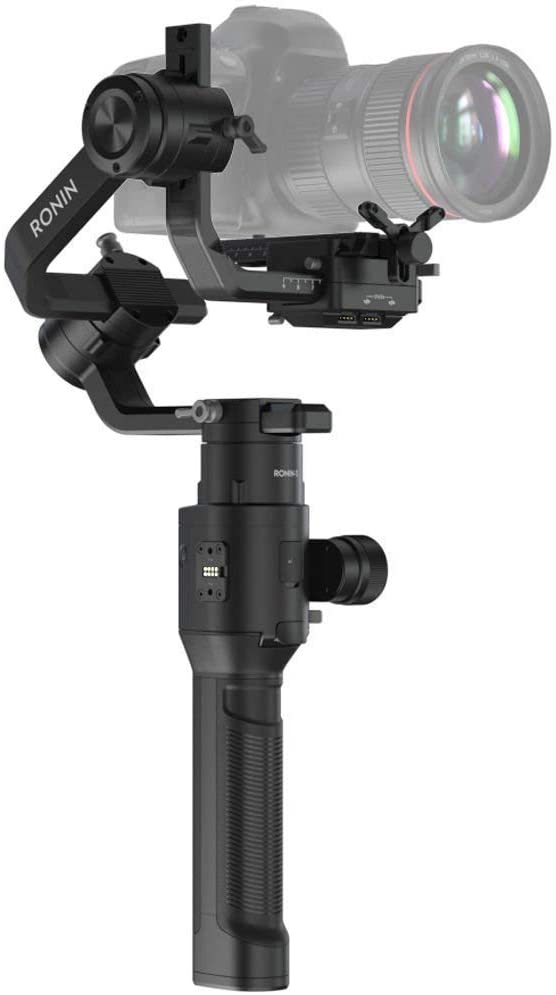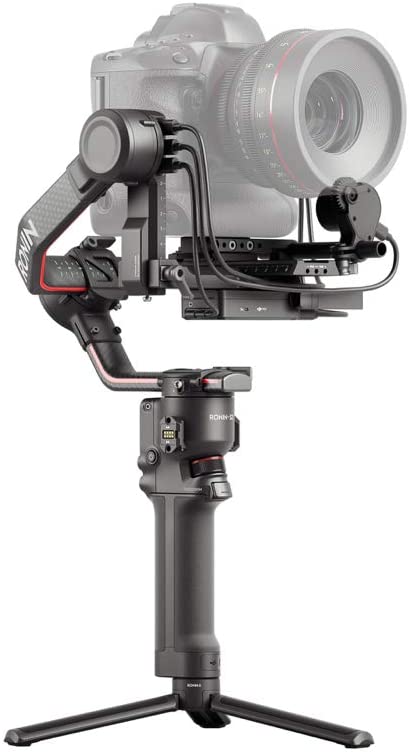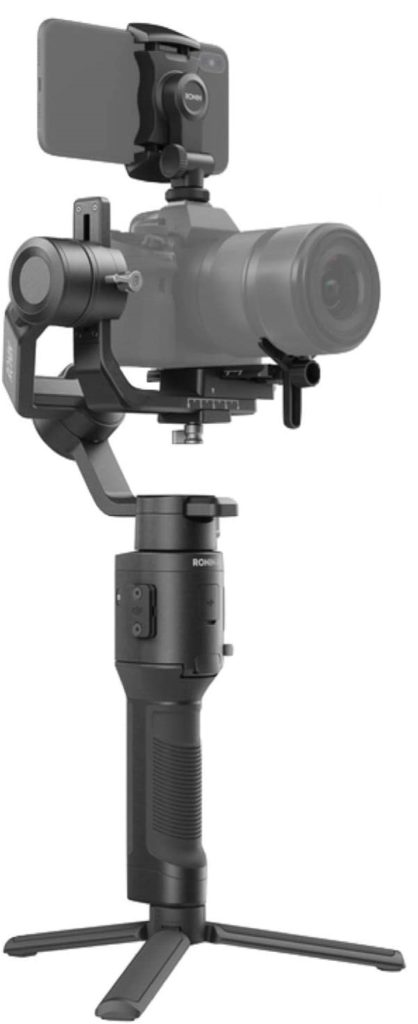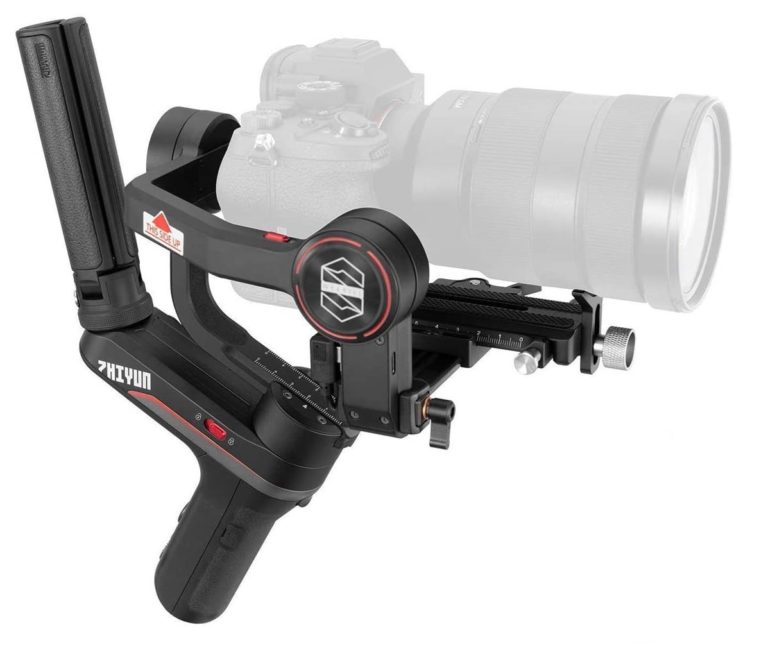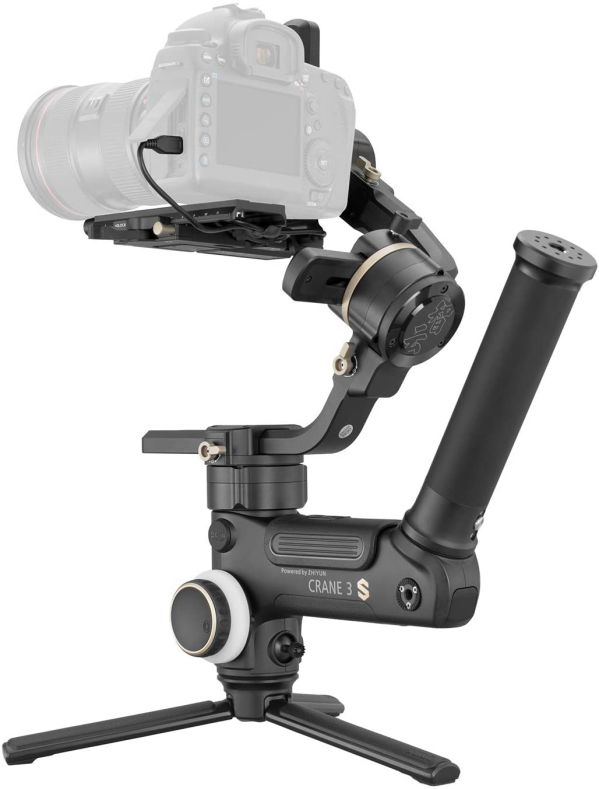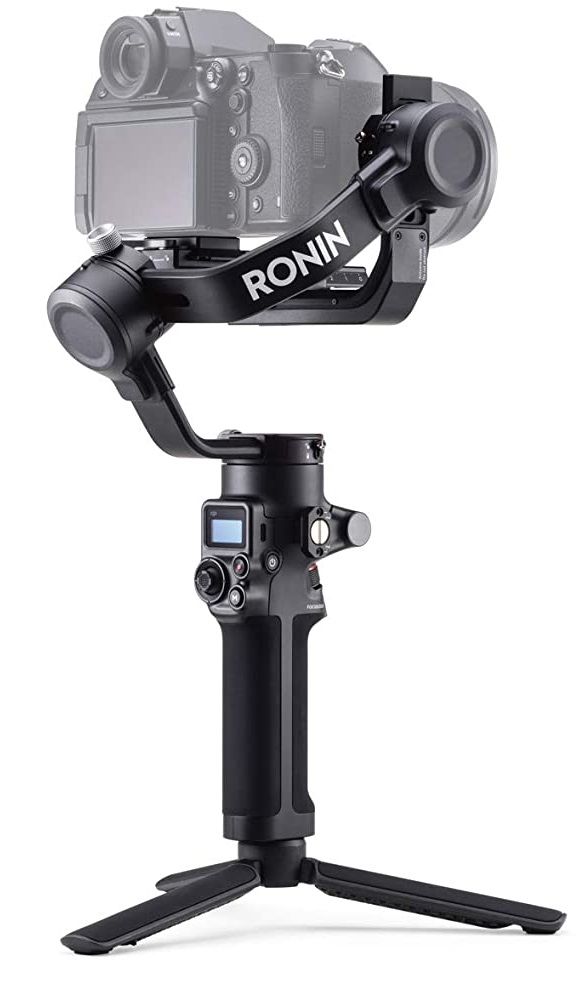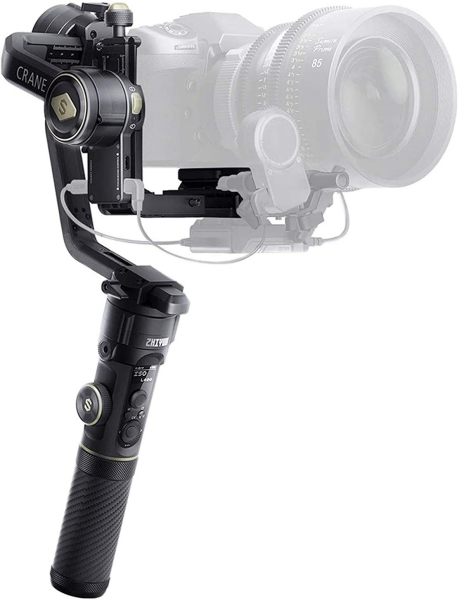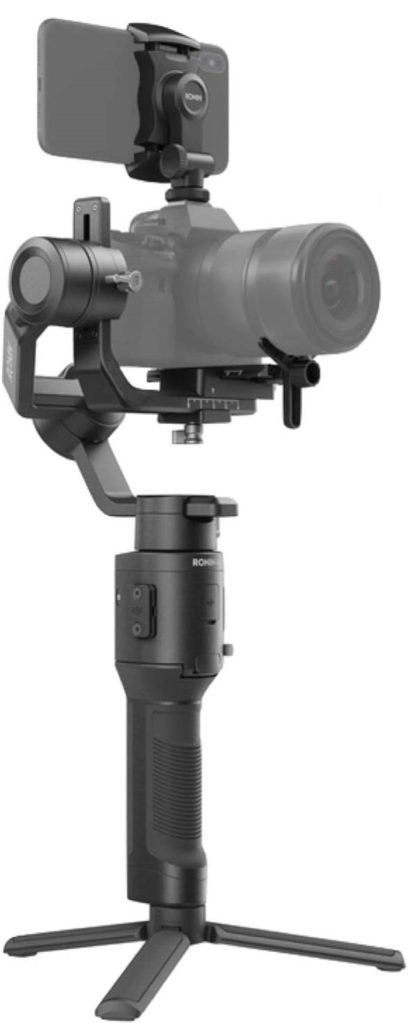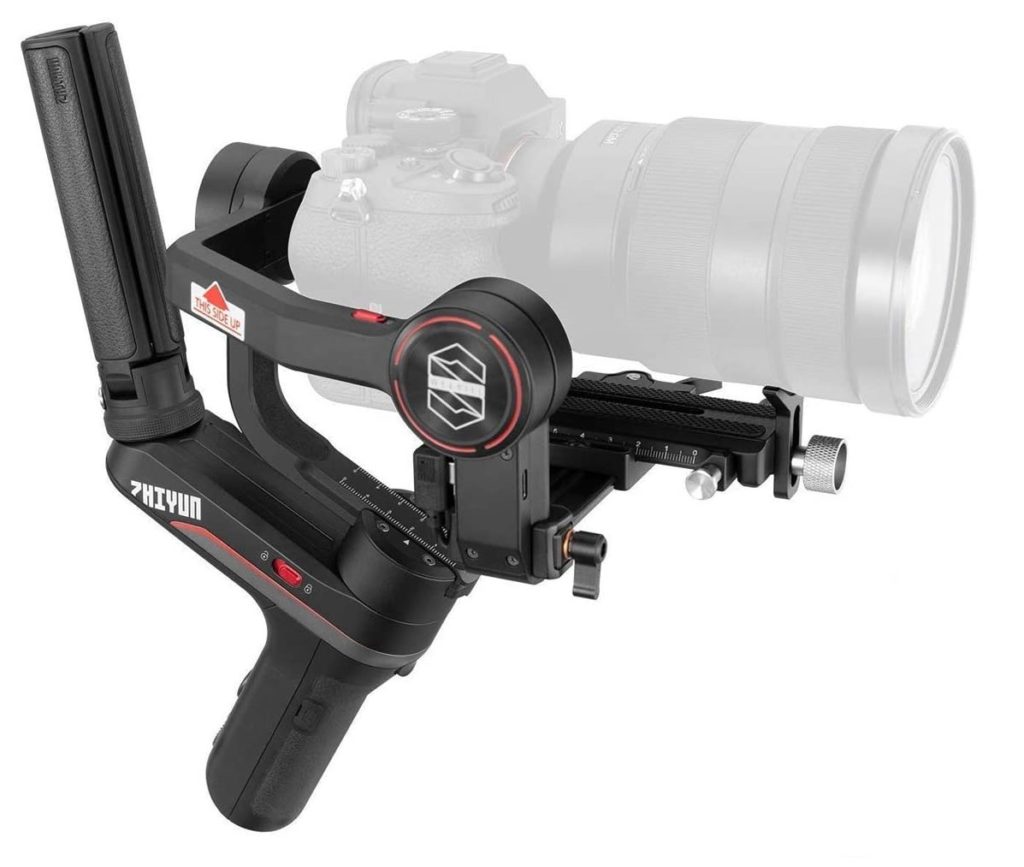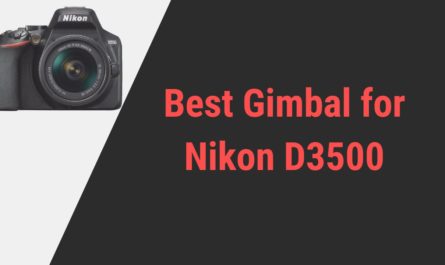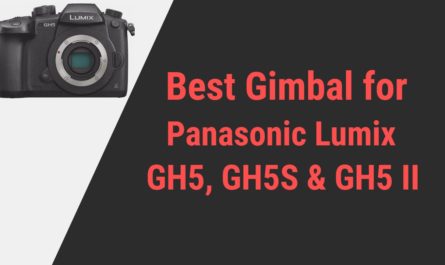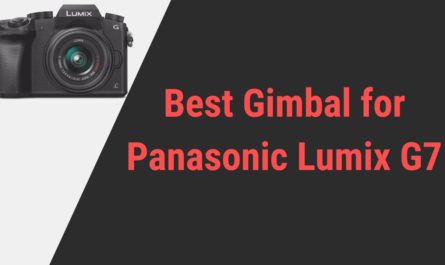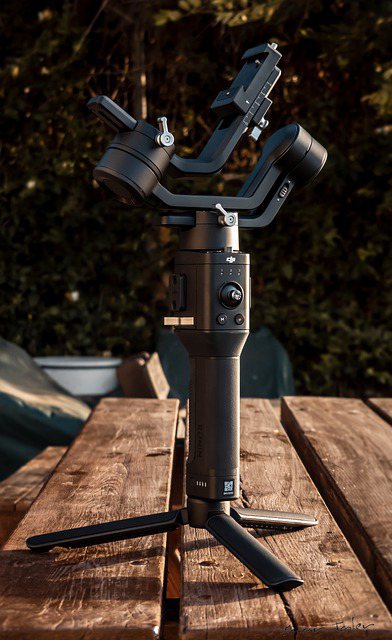 Photography and videography is art. Not all can click a top-notch photo that can blow someone’s mind. It requires years of practice, patience, and of course, the craft to even correctly hold the camera.
Photography and videography is art. Not all can click a top-notch photo that can blow someone’s mind. It requires years of practice, patience, and of course, the craft to even correctly hold the camera.
It’s a general misconception that with an expensive super-advanced camera in hand, you can click beauty out of the beast, but people often forget that it’s not always the camera that creates the magic. Sometimes external mediums are required to do justice with the scenic beauty.
Often, you would have felt the need for a robotic hand while taking some difficult shots from your camera, or you might have wondered, how could cinematographers of action movies make some insanely impossible shots look easy and natural.
Well, the answer to all of these questions is a Gimbal. Gimbal provides support to your camera and allows its rotation along the various axes, especially to take motion-oriented video shots without any wobbling effect.
Nowadays, you will find several gimbals out in the market claiming to be the best. We have shortlisted seven gimbals that work marvelously with Sony A6000 series cameras. Have a look at them and decide which one you want.
| DJI Ronin-S (Best Overall)

|
| DJI RS 2 (Most High-end | Compact/Lightweight & Comes with Advanced Features)
        |
| DJI Ronin-SC (Cheapest - Low Payload Capacity)
        |
| Zhiyun Weebill S (Best for Two Hand Operation)
        |
| Zhiyun Crane 3S (Advanced version of Weebill S - Also Best for taking Horizontal Shots)
        |
| DJI RSC 2
        |
| Zhiyun Crane 2S
        |
Best Gimbal for Sony A6000 Series Cameras
1. DJI Ronin-S – Best Gimbal for Sony A6400
After launching Gimbals for lightweight cameras, considerably for mirrorless cameras and smartphones, DJI came up with another exciting new 3-axis gimbal Ronin-S. The best part of this model is that it supports almost all types of DSLR and Mirrorless cameras and can hold a payload of 3.6 kg. Hence, it is the best-suited gimbal for the Sony A6400 camera.
With an aim to support more weight, unlike other Ronin models, the framework of Ronin-S is designed in such a way that it holds the camera payload above the roll axis, hence giving us an obstacle-free line of sight. Even in a low-angle shot, the roll motor of the gimbal works so well that it always maintains a safe distance between the camera and the roll axis.
The trigger button on the gimbal works wonders while handling the camera movement. Not only does it help to lock the camera axis to take a stable shot, but with double and triple-click, it brings back the camera axis to the center and a selfie mode, respectively. This is the same feature they inherited from Ronin’s Osmo variant.
The focus wheel, when connected with the camera using an included cable, helps to make focus adjustments in the camera along with regulating the on-off recording when needed, making it more user-friendly.
Another great feature is the M-button which allows us to switch to three user-profiles and enables us to take fast-moving sports shots with no fluctuations. The joystick gives you one-handed control, keeping your other hand free to manage other things while taking a tough shot.
Connecting the gimbal with the Ronin app unleash more exciting features of the gimbal, giving you a professional video-making experience. This allows you to use some of the inbuilt automated features like Panorama, Timelapse, Motionlapse, and Track.
With a mounting point for additional accessories, you can attach more modules to it to shoot more complicated scenarios. It has a 2400 mAh built-in battery, which gives you a non-stop recording experience of up to 12 hours.
Attaching the camera with the Ronin-S is easy and with Ronin App’s autotune feature, you can check if your camera is balanced properly or not. The comfortable grip helps you to take long shots with ease. Its detachable feature not only saves you a lot of time but also gives an option for easy storage.
Pros
- Long battery Life
- Easy to set up
- Multiple accessories can be used at once
Cons
- None
2. DJI RS 2 – Best Gimbal for Sony A6100
With an upgraded and more improved version of the Ronin S, DJI came up with a new RS 2. It has a self-weight of 1.3 kg and can hold a payload of a maximum of 5.8 kg, all thanks to its fiber arms with attractive design element which makes the whole body lighter but equally strong and sturdy.
This model of DJI can be considered as the flagship version of the Ronin series; hence it is costlier than the Ronin S and Ronin RSC.
It comes with a detachable battery system and provides a runtime of 12 hours. Hence, you can always keep a spare battery to replace the discharged battery for a non-stop film-making experience.
The cool thing about RS 2 is its 1.4-inch full-color touchscreen which allows you to use various features of the gimbal without actually using the app on your phone. Also, you can directly access the active track 3.0 feature from the touchscreen, making your work even simpler.
The touchscreen is very sensitive, so you need to be cautious while using the gimbal, as you might accidentally activate a few unneeded gimbal features. However, you choose to lock the LCD with just a press of the power button and continue with your videography.
The DJI RS2 gives you an additional attachment option of the Raven eye to it, which eliminates the need for mounting your iPhone; if you are willing to use the Active track 3.0 feature. With the Raven eye, when connected with the gimbal with the included cable, it works flawlessly in tracking the subject.
You can control the gimbal through the smartphone via Raven eye through the wireless transmission. Make a note of it, to use this feature, and your camera should be compatible with the Raven eye feature of the DJI system.
The gimbal gives you various options in follow mode like Pan follow, Pan tilt follow, FPV, 360ᵒ roll. The 360ᵒ roll feature can be easily controlled with the joystick on the gimbal, hence allows you to take a more controlled shot.
It has a dual-layer camera mounting plate which not only keeps your camera with a large lense elevated, but it also gives you the compatibility option of Manfrotto and Arca-swiss standards.
It has a safety feature that tells you that the motor is being strained when using a heavy lens, hence saves you from taking unstable footage and avoids motor failure. This ultimately gives you an idea of the type of lens you should use for this gimbal.
Pros
- The LCD screen gives easy access to several features
- Raven eye eliminates the need for phone mounting
- Stylish finish and sturdy body
Cons
- Using additional equipment on the gimbal is confusing
- Given the size of the gimbal, the runtime of the battery is not up to the mark
3. DJI Ronin-SC Pro – Best Gimbal for Sony A6600
With payload support of up to 2 kg, the Ronin-SC gimbal is specially designed for low weighing mirrorless cameras. It provides 11-hour long battery support and a flared handle for a reliable grip. One more battery feature of the Ronin SC Pro is that it can charge compatible sony models via the standard C-plug without any external cables.
The best part of this model is its multiple axis lock system, where you can lock each arm on the axis to avoid unwanted dangling of the camera, and this also allows you to take multiple stable shots from different angles adding versatility to your filmmaking craft.
It comes with a phone holder attachment, designed to be used with the Active track 3.0. This feature allows you to use your phone camera as an object tracker, which then translates into the movement on the gimbal.
To do so, you simply have to mount your phone on the top of the camera with the provided bracket and select the object that you have to track using your phone’s display.
The force mobile is also one of its new features where the movement of your phone is replicated by the gimbal axis when connected to it via Bluetooth. Although to use this feature, your mobile should be compatible with the Ronin-SC Pro gimbal.
It comes with a quick-release plate with a slider attached to it which blocks the position of the camera on the plate. Hence, it memorizes the camera’s position, which avoids the effort of readjustment when the camera is remounted. The kit also comes with a riser plate to raise the camera’s body up from the lens.
After you enable the 360ᵒ 3D roll feature on the Ronin app, you can take the mesmerizing 360ᵒ roll shots. The Ronin app comes with another amazing feature of the virtual joystick, which allows you to control the movement of the gimbal axis with a simple finger touch.
Its lightweight and compact design make it so handy that you can carry it to the most remote place without getting tired. With magnesium and aluminum finish along with the use of high strength composite material, makes its body strong and reliable.
The Ronin-SC Pro Combo also comes with an additional focus motor only compatible with this particular model. Although it might be complicated work for new users with connecting the camera cable and the adapter.
Pros
- Lightweight
- Individual axis balancing
- Strong and compact design
Cons
- Not compatible with DSLR cameras
4. Zhiyun Weebill S – Best Gimbal for Sony A6500
It is a tiny gimbal weighing only 2 pounds, and its compact design enables you to shoot tiny areas with ease. The gimbal axis works flawlessly when taking a transitional shot from an upright position to a low position.
Being lightweight, it doesn’t make your arm tired, and you can shoot for long hours without feeling the necessity to rest.
While hand holding the gimbal handle with all the buttons on it, it might get tricky as you could accidentally press the buttons, but Zhiyun has taken care of this problem as well. On double-tapping the LV button on the gimbal, all the other keypads get locked, saving you from using a tripod to handheld the gimbal.
The Zhiyun Weebill uses the ZY Play app to access its various remote control features, the motion controller being one of them. Compared to its previous versions, this feature has become much smoother and faster.
Zhiyun Weebill S compact is also called a tiny giant, and as the name suggests, even after being so tiny in shape, it can hold a payload of up to 3kg.
It has 2×18650 LHon batteries which give you a 14 hour-long runtime. It is located at the back of the gimbal, not at the bottom, hence saving you from having a long handle. And when you break down the gimbal, you don’t have to have a specially designed case for it; a simple backpack will do the work.
This gimbal also comes with a multi-axis lock system with or without a camera. Hence you don’t have to worry about the camera dangling all over the place, and you can take different angled shots with perfection.
Although you may get a robotic shot instead of a natural-looking shot when you use the gimbal in underslung mode while moving left to right or vice versa. The axis doesn’t work perfectly on that horizon.
Zhiyun has come up with a new Transmount image transmission module that connects to the camera and then sends video from the gimbal to your phone using the wifi.
The mounting system has two in one quick-release plate, i.e., the Manfrotto and Arca-swiss, which guides you with the easy mounting of the camera. As the name suggests, it also becomes useful in quick unmounting of the camera and then rebalancing without putting in the extra effort. This gimbal ideally works for small mirrorless cameras.
Pros
- Extremely lightweight
- 14 hours long battery runtime
- All axis lock mechanism
Cons
- The sync motion is not very responsive
5. Zhiyun Crane 3S – Best Gimbal for Sony A6000
Premium cinematic video production requires huge cameras or camcorders to catch every element of the scene, be it for a wide shot or a close shot. To make such cinematography work easy, Zhiyun has launched its new Crane 3S, which not only can hold huge DSLR cinema cameras but also bulky camcorders.
It supports a payload of up to 6.5 kg and cameras like red digital cinema camera, Sony Fx, A6000 series along with other brands like canon, Blackmagic pocket cinema camera can be easily mounted on this gimbal.
It has a 2 step axis lock mechanism on each axis which gives optimum stability to your camera setup. One more good thing is that it also gives you the option of locking on the extended grip.
Talking about its expandability feature, Crane 3S allows you to add an extended module to its roll axis for a large cinema camera setup. For a small DSLR setup, you can remove the sling arm for easy portability.
They have redesigned the Manfrotto quick release plate on the gimbal, this time, you can screw on rails which allows you to attach lens support for larger lenses, and you can also attach a follow & zoom control motors.
The mode button on the gimbal gives you access to various shooting modes, and the bright LED light above the mode button tells you which mode you are in. They also added a function key that, when switched on, locks all the buttons on the gimbal handle for safe and unobstructed use.
Zhiyun crane 3S has made an upgrade in its zoom and focus system to support larger camera lenses. This feature can be easily controlled from the Smartsling handle, which allows you to control the camera single-handedly considerably for light setups.
Big cameras require a greater and constant power supply, and Crane 3S has completely taken care of that. They give you a 3×2400mAH battery support which can power the gimbal for up to 12 hours.
The story doesn’t end here; with their new Transmount Powerplus battery pack, which comprises 6×2400mAH batteries, you can shoot for longer without worrying about the draining battery life.
Moreover, they also give you the facility of direct charging through their DC-IN port, which can be made in good use for charging between shots.
Its smart and improved motor placement gives you an unobstructed line of sight and also gives you enough space to mount a big camera without them getting rubbed with the motor.
Pros
- The highest payload of 6.5kg
- Transmount Powerplus battery system
- Smartsling handle
- 2-step axis lock system
- Axis extension facility
Cons
- Slinghandle material is not up to the mark
6. DJI RSC 2– Best Gimbal for Sony A6300
Ronin RSC 2 can be considered as the upgraded version of the Ronin RSC and has a sturdy body when compared to RSC, which felt flimsy with and without a camera mounted on it. The unique feature of this Ronin model is its foldable design, making it easy to transport and store.
In its folded position, the gimbal becomes smaller than an A4 size paper. But even with such a compact design, the quality of this gimbal is not compromised.
Even after being a lightweight gimbal of only 1.2 kg, it supports a wide range of cameras with a maximum payload of 3.6 kg, thanks to its strong aluminum finish, which gives it great stability and strength.
One new thing which DJI introduced in this Ronin model is its amazing 1 inch OLED screen which allows you to select multiple features of the gimbal with just your fingertip.
The side dial to the left of the screen allows you to choose various settings options like follow mode, autotune, joystick advanced settings, etc. The front dial controls camera focus, and with additional settings, it can also be used to control focus motors, ISO, aperture, and the roll axis.
Its dual locking tripod plate mechanism is one more feature that makes your video-making experience easy. It comes with an Arca-swiss plate which easily gets mounted on the gimbal without requiring any extra adjustment.
The Arca-swiss plate becomes very effective when you have to change the battery, or you want to remove the camera for handheld shooting; it would hardly take 5 sec to unmount the camera.
It also has another plate called Manfrotto standard, which gives you spacing between the camera lens and the tripod plate. This not only gives you a riser system but also saves the lens from touching the plates.
With 14 hours of battery life and a quick battery charging system, this gimbal gives you the advantage of shooting more and charging less.
Pros
- The foldable design makes it easy to carry.
- Quick charging
- Long battery life
- OLED screen
Cons
- Heavy for one-handed use
- Arca plate is not compatible with every camera
7. Zhiyun Crane 2S
With an aim to hold high-end DSLR and mirrorless cameras, the Zhiyun has come up with its new model Crane 2S with a self-weight of 7 pounds approx.
Its handle is made up of carbon fiber which gives the gimbal a lighter feel without compromising the strength and the loading capacity of the gimbal.
It has a Flexmount system that comprises a horizontal mount and a vertical mount. It is one of the best features of this gimbal, where you can switch from horizontal to vertical video mode within a few seconds.
If you don’t have a camera whose screen flips out, then using this gimbal might get tricky. The design of this gimbal can be considered old-school if the motor position is taken into account. It obstructs your line of sight if you are using a camera with a non-flipping screen.
Although, Zhiyun stills give you the option of a built-in extension using which you can lower the position of the motor to get an obstruction-free camera view.
One of the best things about Zhiyun crane 2S is that you don’t have to use the ZY play app to balance the gimbal from the auto-tuning feature; you can simply navigate this feature from the gimbal itself.
The crane 2S comes with a bigger screen of 0.96 OLED, using which you can navigate through various menu options and switch to the different modes as per requirement. The go mode perfectly captures the movements within the vicinity of the camera, and vortex mode gives you the crystal clear 360ᵒ shot.
It uses 3 replaceable 18650 Li-ion batteries that give a runtime of 12 hours. It is also equipped with an additional slot for a dedicated Image transmission transmitter, giving you the freedom to work with a larger group of people.
The built-in focus wheel is also something that makes it a nice choice. The quality of the camera focus control system has improved a lot, and with the addition of a focus motor, the focus control mechanism can be achieved with more precision. Here, let’s be clear that the focus motor doesn’t come with the kit, and you have to purchase it separately.
One strange thing about this gimbal is that Zhiyun didn’t give any payload rating for its Crane 2S model. Hence, based on its previous model Crane 2, with a payload capacity of 7 pounds, let us assume it can hold a payload of 7-7.5 pounds, given the fact that it has long motor arms that are built to support heavy cameras.
However, Zhiyun gives you a detailed PDF informing you about the type of lenses and cameras it supports, Sony A6000 series cameras being part of it.
Pros
- Best for heavy setups
- Flexmount setup
- Autotune without the use of the app
Cons
- Heavy for single-handed use
- Rotor motors block the line of sight
List of Sony A6000 Series Cameras
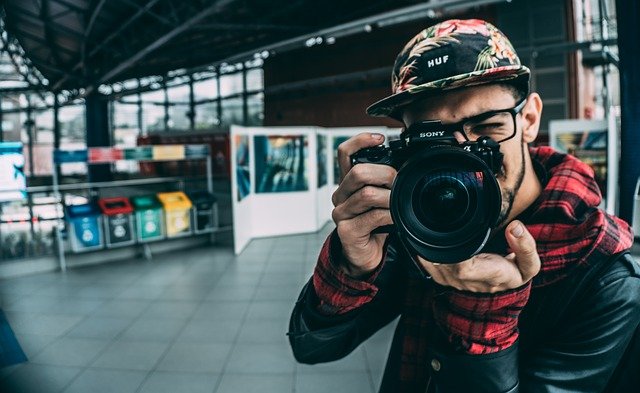

1. Sony A6600
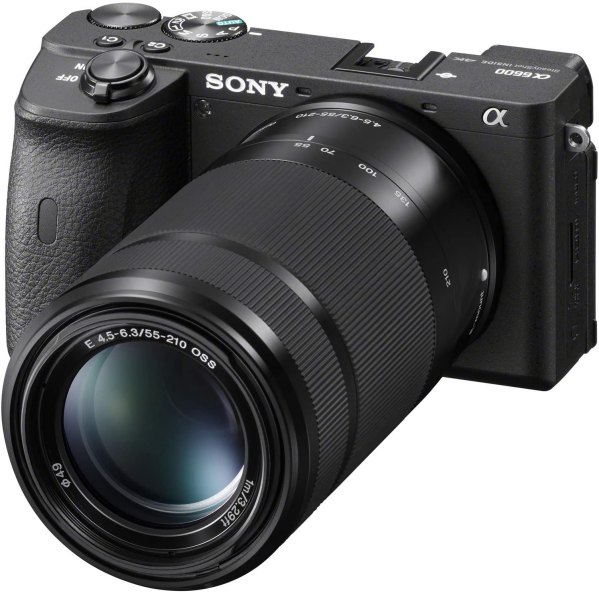

Sony A6600 is the flagship version of 6000 series cameras which makes it more expensive than the others. Being the best version of the Alpha 6000 series, now the camera comes with an FZ100 battery as compared to the FW50 batteries that are used in the rest of the A6000 series cameras.
This is one of the most important changes that this series of cameras seriously needed. Hence, with the introduction of FW50, you get a longer shooting time, you don’t have to carry extra batteries, and you get a much bigger grip which gives you a comfortable and balanced handheld experience when used with longer lenses.
Also, you can take up to 810 shots when the battery is fully charged, which beats a lot of its rivals.
The camera also has Sony’s new evolved Eye autofocus and Animal autofocus in still mode that delivers sharp photos of people and pets. And it has also become better at following people. Now, you can activate the eye-tracking mode by half-pressing the shutter rather than having to hold the custom buttons.
Earlier, you were not allowed to increase the camera’s brightness if you were shooting in the 4K mode, but now you can do so. Also, the overheating problem in A6600 is taken care of. You can shoot long hours of 4K videos without it getting shut down.
With the introduction of a new headphone jack in A6600, your vlogging experience becomes easier. Hence, along with creating a quality vlogging video with its flip-out screen, you can also keep monitoring the film’s audio.
It has got the same image sensor of 24.2 megapixels with 11fps of continuous shooting. And built-in IBIS also works great when you are taking a shot while moving the camera. Here the sensor also moves with the camera to reduce the camera shake, which enables you to take a blur-free image.
One strange thing you will find in A6600 is that the flash has been removed. Being a flagship camera, you would expect an in-built flash like its other variants, but for some reason, they have removed it. It has a square 1:1 crop option. Hence, you can take an already processed cropped image without having to crop it in post-production.
Overall, it seems like Sony has addressed almost all the flaws of its previous A6000 serious cameras and gave us the best version possible in the Alpha segment.
2. Sony A6100
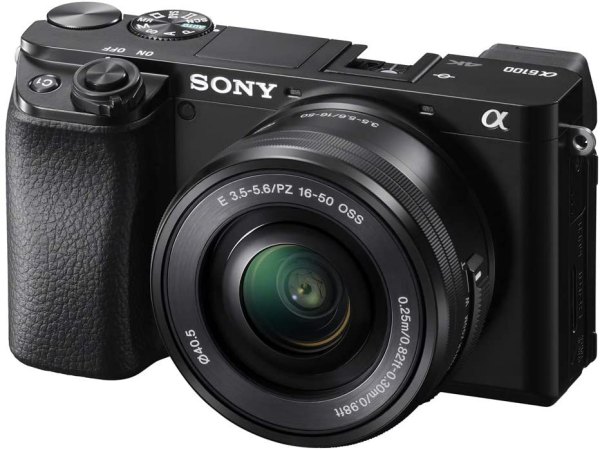

With a strange release in the year 2019 after the release of all the other A6000 series cameras, Sony has made some really big improvements in its A6100 camera. With a weight of 396 grams, Sony kept the commitment of producing lightweight, compact and handy mirrorless cameras.
With new modifications in its display, now it can be tilted up and around, hence best for taking a selfie or Vlogging. It has maintained the shutter speed and autofocus of the camera, which makes it unreachable for several entry-level cameras.
You not only can shoot at 11 fps, but you can do so with Autofocus mode on. This gives you a lot of freedom to capture spontaneous moments with ease.
The display comes with touch control autofocus, but the strange thing is that even after being a touch supporting display, you can only access the menu option using the dials. This makes it a semi-touch display. However, a touch control display also comes in handy when you want to take subject-specific pictures.
Using the touch screen, you can track the subject, and the camera follows the subject wherever it goes. The same thing applies to eye and face tracking. With these settings on, you can take flawless pictures without missing your subject.
The A6100 uses the same battery as others, but now it has become more efficient and can capture up to 420 shots when fully charged. One more interesting part of its battery system is that you can use the camera while it’s getting charged, which is awesome, especially when you are recording long video sessions.
The color rendering has also improved a lot, and it gives a more natural color to the subject. It has a microphone input but does not come with a headphone port. Using the microphone input, you can mount a small microphone for vlogging.
Although your screen will be blocked when you use the microphone setup, hence it is recommended to use the in-built microphone of the camera for video shooting.
The Sony A6100 has an ISO range of 100-32000, which, when accounted for, performance under dark situations impresses a lot. It gives a very clear picture in extremely low light when used in higher ISO values.
When we talk about the grip, A6100 comes with a deeper grip making it very comfortable to hold and use. This factor becomes really noticeable when you use heavy lenses on it. Other than this series, Sony has also released many other camera series including, Sony A7 Camera Series and Sony A9 Camera Series.
3. Sony A6500
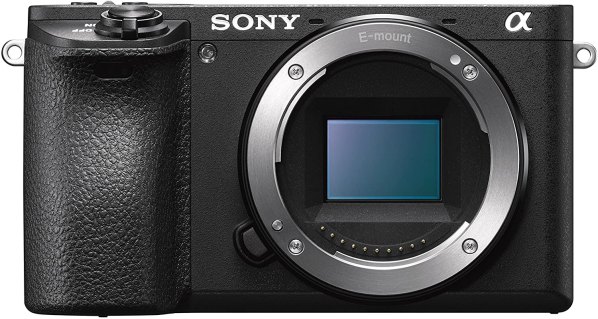

With an unchanged sensor resolution of 24.2 APS C-sensor and an ISO range of 100 to 21000, the sony A6500 still maintains the premium picture quality for the image taken from it.
This time it has also got a built-in stabilization which means you don’t have to mount an image stabilization lens for smooth photos. If your work involves a lot of handheld shots, then this feature works wonders.
With a weight of slightly higher than the previous A6000 series cameras, the Sony A6500 still feels lightweight when held in hand and easily handles various lenses with its E-mount lens system.
The buffering problem of A6300 is addressed in this model of Sony. Earlier, when you tried to shoot fast-moving scenarios, for e.g., sports and the camera buffers, and you wouldn’t be able to review it while it is processing the content.
But now, with its advanced processor, the buffering problem is gone, and you can instantly check the shot pictures without any delay.
The overheating problem of the camera has also been addressed. However, this problem has not been eradicated completely, and you may feel the heat while using the camera in 4K, but that only when used for a long time.
With their new touch screen, they have introduced the touch and drag feature that allows you to change the focusing point by dragging on the screen. The quality of the touch screen is extremely low. Sometimes you have to touch the screen multiple times for it to sense your touch, which is annoying.
The image and video quality of the camera remained unbeaten. With features like object tracking autofocus and now with the application of the new drag feature, the overall photography and videography experience have improved tremendously.
The camera comes with a brand new buffer that can take up to 100 raw files at 11fps and process them. The menu system has also been revised, and you will get two more buttons on the top of the camera named C1 and C2.
They are the custom buttons. With C1 you can do color adjustment of the scene to get a more natural image and with C2 enables you to change focus.
The best part of the Sony A6500 is its five-axis image stabilization, which not only guides you to take a stabilized image along the horizontal and vertical axis but also the yaw, pitch, and roll axis.
4. Sony A6400
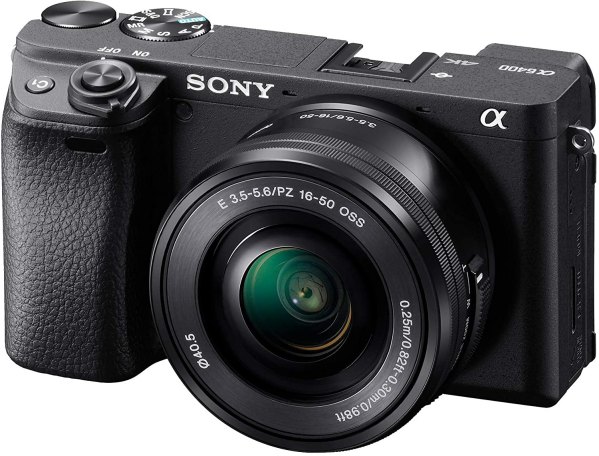

The Sony A6400 looks very similar to that of the A6300 and A6500. Apart from this fact, there are a few improvements and advancements have been made in this camera which gives tough competition to its rival brands.
The sony 6400 comes with an advanced processor based on its much more expensive segment A9 Series Cameras, which enables real-time tracking autofocus. It also got a flip screen that was seriously missing in the A6300.
It has a BIONZ X image processor, which helps with operating speed, performance, and overall image quality. It uses a high-speed autofocus system with 425 face detection points and 425 contrast-detection points.
Because of the use of a better processing chip, surfing through the menu setting has become a lot faster. One more good change which you will find in this camera is its 30-minute video shooting limit.
This is a very needful change that Sony has made in the A6400. People can now shoot long videos without fearing the camera’s default setting to stop the video after 30 minutes. It has purely removed the hassle of the videographers to keep track of the video while they are shooting.
The quality of the 4K video has also been improved a lot. The color and pixel quality can easily be noticed when compared with A6300.
When the ergonomic design is considered, the placement of the battery works out to be impressive when the camera is mounted on the tripod. You can change the battery or SD card without having to take the camera off the tripod.
The viewfinder is good as well. It is a 2.6 million dots OLED EVF with an automatic brightness control that works phenomenally in both bright sunlight and low light situations. The menu settings can be confusing for new users, and a person might need to do a thorough studying of the user guide to use the camera to its optimum functionality.
This camera comes with a maximum resolution of 6000×4000, which is more than enough, given the price range of the camera. It captures both JPEG and Raw photos so you can decide how much information you want to keep and how much you don’t, depending upon the priority of the image.
The A6400 doesn’t have In-body stabilization, so you have to use an external lens for image body stabilization. This is also one of the reasons that keep the overall price of the SonyA6400 less.
5. Sony A6000
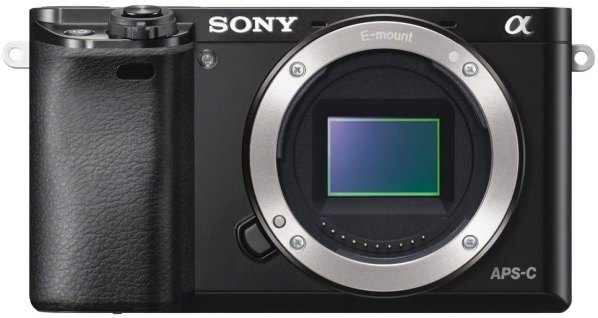

When it comes to camera buying, a few brand names always pop up in our minds whom we can rely on, and Sony is one of them. This is for all the obvious reasons that the reputation the company has built over the several decades in the camera making industry.
No wonder, because of their constant hunger to bring improvement in their technology, it always kept them in the race.
In the year 2014 Sony had launched its first segment of the A6000 series cameras with their new A6000 mirrorless camera. With this launch, the popularity of the sony cameras increased fourfold. Let’s go through the Sony A6000 cameras and find out why they are still a popular choice among the masses.
Sony A6000 comes with a 24.3-megapixel sensor which gives a tremendously clear and high-resolution picture. Besides, it can shoot 11 fps which is great to shoot sports-related pictures or even the birds flying in the sky. Also, it can record video at 1080p at 60 fps.
The camera uses the trustworthy E-mount lens system, which allows you to mount a wide range of lenses whether you want a prime or macro or zoom lens; it is compatible with a considerable amount of lenses. This seriously helps to enhance the quality of your picture.
It has a maximum ISO of 25600, which is great for adding extra light to your photo, especially when you are shooting in a dark situation. The autofocus system of the camera is nice as well. It gives you 179 autofocus points and is really smooth and fast to autofocus on the subject. Moreover, it also has eye autofocus which can only be used with a single shot.
It has a single memory card slot at the bottom, which is compatible with various kinds of memory cards like SD, SDHC, SDXC, etc. Its light and dust-resistant body is one more factor that makes it very reliable and still the first choice for a lot of people.
The battery life is not that long-lasting, and you can take 310-360 shots once it is fully charged. And if you plan to take more video shots, then it is recommended to have some extra batteries.
The most crucial factor which keeps this camera stand out compared to other brands is its cheap price with greater specifications. The fact that even after being launched back in the year 2014, it is still actively sold in the market, which proves how this camera has impressed videographers and photographers.
6. Sony A6300
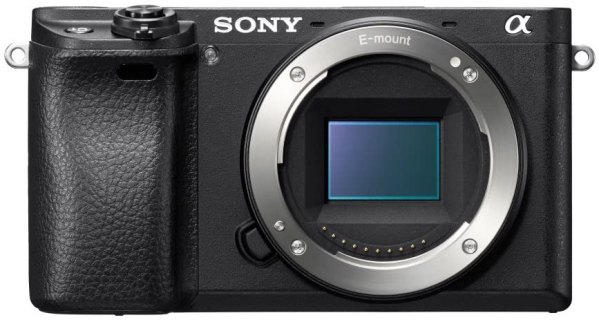

Launched in 2016, the Sony A6300 is made up of a magnesium alloy body and is extremely tough. It is weather and dust resistant; hence you can use it in the most extreme weather conditions as well.
The camera comes with a 24.2-megapixel sensor and can record a video in 4K up to 30 fps. In full HD, it goes up to 120 fps, which gives you the option of taking super slow motion with the best HD quality. If you are doing action-oriented photography, then its continuous shooting mode at 11fps makes your work easy.
It has also got a flip screen, but the biggest downside of it is, you cannot pull the screen all the way up for Vlogging. The ergonomic design of the camera is not so great, especially the placement of the dials. The rear LCD used in the camera is a thin film transistor (TFT) and has a very shiny plastic cover, making it extremely difficult when you are shooting outside.
One more drawback of its design is that if you plan to use a tripod or monopod with your camera, then the screen gets locked when you screw the camera on the mounting plate. The A6300 camera still doesn’t come with a full touchscreen, which makes it hard to operate when you want to switch to different modes without disturbing the dials.
The silent mode works marvelously well and is great for wildlife photographers who often take sneaky shots of wild animals. The interface is easy to understand, but if you want to make optimum use of the camera, you might have to dig deep into the various confusing menu options, which is time taking and at times frustrating.
The built-in flash is one of the plus points of this camera, and interestingly it can be tilted up to be bounced to get better results in a direct flash. The digital viewfinder of the A6300 is amazing. It gives you 100% coverage and a sharp view.
It also gives you the feature of level, where you don’t have to correct the horizon when you are shooting in landscape or portrait mode.
The battery life still needs an upgrade, although Sony gives you the option to use the camera while charging. Still, this option doesn’t always prove to be feasible, especially in an outdoor shoot, and taking an extra load power bank increases your burden too.

